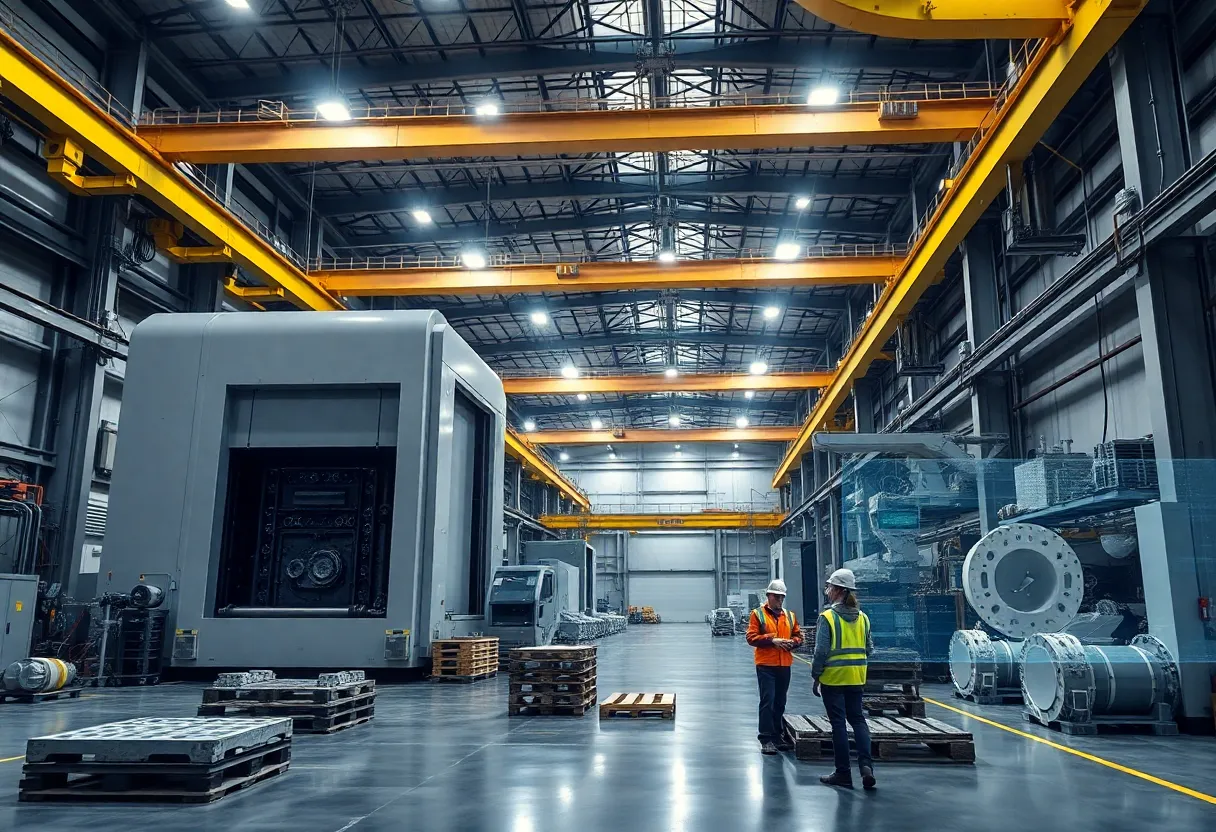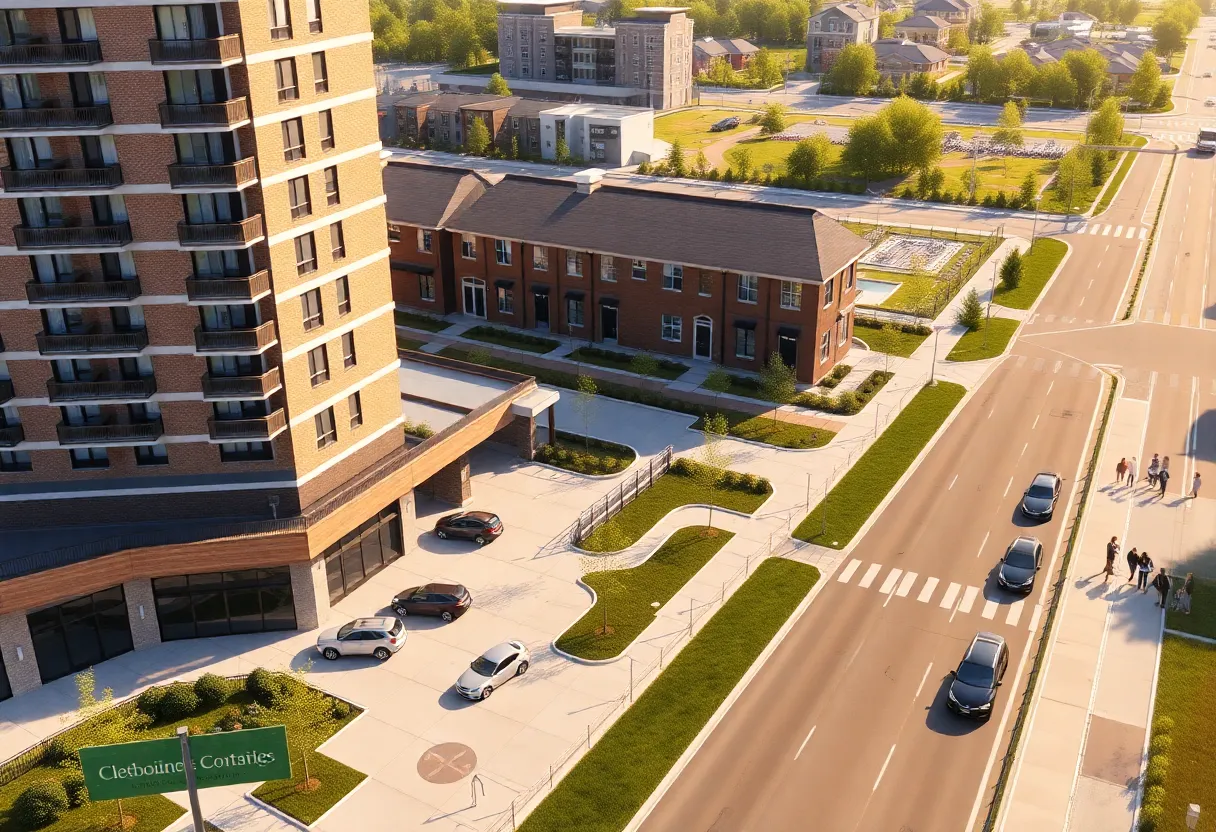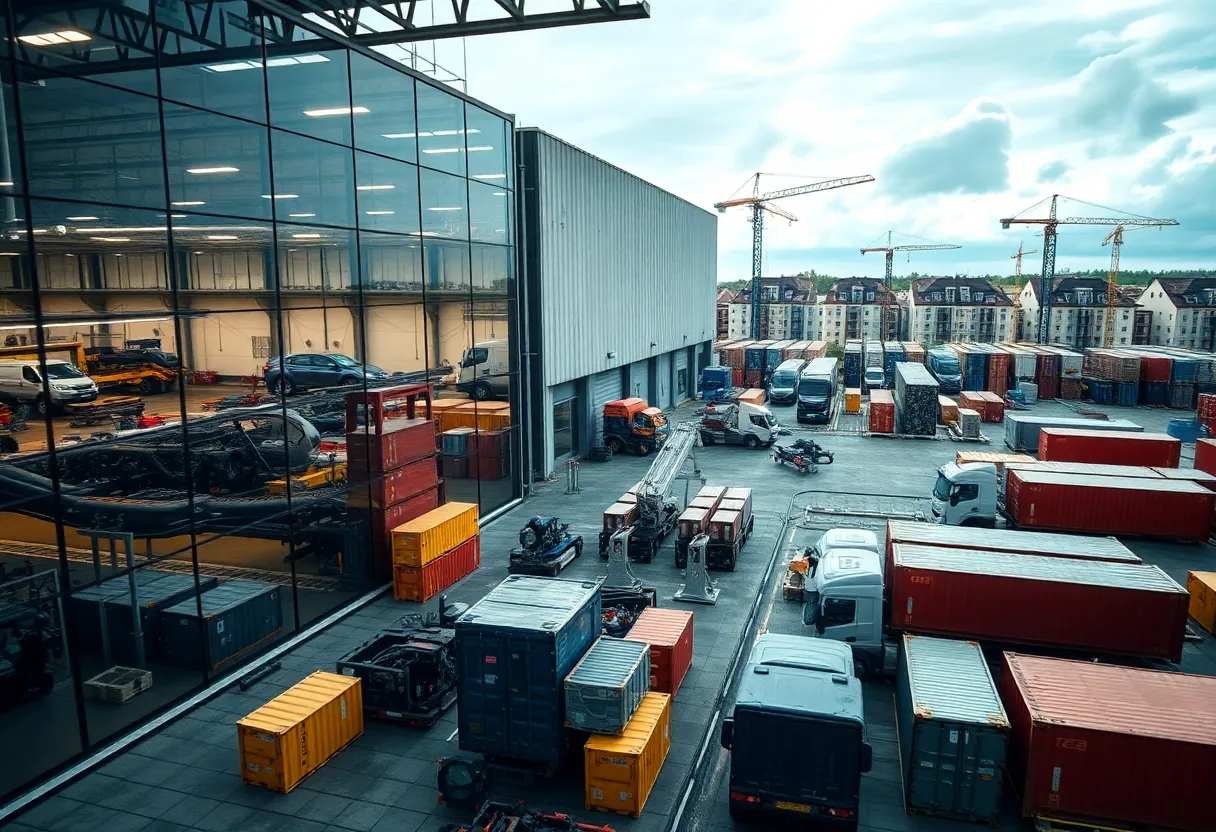China, September 8, 2025
News Summary
Dongfeng has finished construction of a 47,000 m² gigacasting factory 25 days ahead of schedule, allowing earlier equipment installation and commissioning. The single‑phase building will house ultra‑large die‑casting lines including a 16,000‑tonne unit and a 10,000‑tonne unit, positioning the company at the forefront of large‑format casting. Using Building Information Modeling (BIM) sped coordination and delivery. The project targets phased production capacity with an initial annual output goal of 200,000 components and a later scale‑up to 600,000 after additional lines are added. Investment is about 1 billion yuan and lines will be brought online gradually.
Dongfeng Opens 47,000 m² Gigacasting Plant 25 Days Early; Core Hub for NEV Structural Parts
The completion of a 47,000 square meter die‑casting facility marks a notable milestone in the shift toward ultra‑large‑scale casting for electric vehicle production. The project, undertaken by the Second Construction Co., Ltd of the China Construction Third Engineering Bureau, finished ahead of schedule by 25 days and is positioned as the central production base for a broader gigacasting industrialization program for Dongfeng Motor. The facility’s readiness comes with a short runway to mass production, which is slated to begin in June 2026.
The completed plant sits at the heart of a two‑phase development plan and is described as the core production base for the company’s efforts to scale up gigacasting technology for NEV components. Project leadership credits the rapid handover to the use of Building Information Modeling, or BIM, which streamlined the construction process and helped keep engineering milestones on track. The build phase started in November 2024, and the physical plant was completed in a single phase, with casting lines rolling out in stages rather than all at once.
The new facility is designed to accommodate dual integrated die‑casting lines featuring 16,000‑tonne and 10,000‑tonne gigacasting machines. These machines are among the largest of their kind worldwide and are expected to drive substantial gains in both output and efficiency for Dongfeng Motor’s NEV lineup. In practical terms, the capability to form a vehicle’s structural components in fewer, larger pieces is intended to shorten production cycles and reduce assembly complexity across the line.
Inside the plant, the lines are planned to perform as high‑force, single‑piece castings that can consolidate multiple parts into one structural unit. This approach aligns with broader industry aims to strengthen vehicle bodies while trimming weight and labor requirements. The project is being pursued in two phases: the initial installation includes one 10,000‑tonne line and one 16,000‑tonne line, delivering an initial annual capacity of around 200,000 components per year. In the second phase, four additional lines will be added, with total output projected to reach about 600,000 components per year once complete.
The investment for the entire project is reported to be near 1 billion yuan. While the factory building has been completed, the implementation of the casting lines will be phased, allowing the plant to begin limited production as lines come online. The press approach uses ultra‑large machines to cast a few major structural parts in a single operation, which is intended to reduce the number of components, welding steps, and overall production time compared with traditional multi‑part assemblies.
Beyond the Dongfeng initiative, the broader industry context shows multiple automakers pursuing one‑piece or megacasting concepts to streamline body structures and improve energy efficiency. The general rationale centers on simplifying assembly, reducing weight, and cutting labor costs, while also addressing the growing demand for high‑strength, crash‑resistant chassis in EV platforms. Analysts note that the evolution of gigacasting includes ongoing research into material behavior, alloy selection, and process validation to ensure reliability at scale.
Mass production at the Dongfeng facility is targeted for June 2026, with the first phase delivering a solid production baseline and the second phase expanding capacity to support a broader NEV component lineup. The project remains focused on research, production, and sales of gigacasting structural components, including rear floor assemblies and battery casings, which are central to the NEV architecture being pursued. The facility’s scale and phased rollout reflect a cautious but ambitious strategy to integrate a new manufacturing paradigm into mainstream vehicle production.
In summary, the Dongfeng project highlights a deliberate move toward ultra‑large die‑casting as a cornerstone of NEV production. The combination of a large‑scale plant, advanced BIM guidance, and two massive casting lines signals a transition toward higher throughput and fewer assembly steps. As other automakers observe and experiment with megacasting concepts, the Dongfeng plant stands as a concrete example of how a single facility can anchor a broader manufacturing transformation aimed at safer, lighter, and more efficient electric vehicles.
Project scope and timeline
The facility represents a single‑phase building but a two‑phase manufacturing plan for lines. Initial capacity stands at 200,000 components per year, with a future expansion to 600,000 components per year. Construction began in late 2024, and completion occurred 25 days ahead of the contracted deadline. Mass production is scheduled to begin in mid‑2026, following phased line installations and ramping up of output levels.
Key technology and benefits
Gigacasting uses ultra‑large machines to cast complex structures in one piece under high pressure, reducing the number of welded joints and tooling required. This approach aims to improve safety through stronger chassis, cut parts count, and shorten assembly times, while also offering potential weight reductions that can boost energy efficiency in NEVs.
Operational and economic context
The investment level and phased implementation reflect a strategy to balance capital cost with the promise of higher productivity and long‑term savings. The project aligns with broader industry efforts to push megacasting into mass production, while maintaining careful attention to validation and quality control across large, high‑precision parts.
FAQ
What is gigacasting?
Gigacasting uses very large die‑casting machines to form large vehicle components in a single piece, reducing the number of parts and welding steps required in traditional assembly.
Where is the Dongfeng gigacasting plant located and what is its size?
The plant covers about 47,000 square meters and is positioned as the core production base for a gigacasting program within Dongfeng Motor’s NEV strategy.
What are the capacities of the lines planned for the first phase?
The first phase installs a 10,000‑tonne line and a 16,000‑tonne line, delivering an initial annual capacity of about 200,000 components.
When will mass production begin, and how is the project phased?
Mass production is planned for June 2026. The project is developed in two phases, with the first phase adding two lines and the second phase adding four more lines to reach a total of six lines after completion.
What is the anticipated total annual output after both phases?
Total output is projected to reach around 600,000 components per year during full operation.
Key features
| Feature | Details |
|---|---|
| Facility size | 47,000 square meters |
| Technology | Dual gigacasting lines (16,000‑tonne and 10,000‑tonne) |
| Phases | Two phases; first phase starts with two lines, second phase adds four lines |
| Initial capacity | About 200,000 components per year |
| Total capacity | About 600,000 components per year after full rollout |
| Investment | Approximately 1 billion yuan |
| Timeline | Construction completed; mass production targeted for June 2026 |
| Primary use | Gigacasting structural components for NEVs (rear floor assemblies, battery casings) |
Deeper Dive: News & Info About This Topic
Additional Resources
- Reuters: Tesla Shanghai plant starts Model Y production with new cost‑cutting methods
- Wikipedia: Gigacasting
- CNEV Post: Tesla Shanghai produces Model Y with integrated die‑casting
- Google Search: Dongfeng gigacasting plant
- CleanTechnica: Let’s go gigacasting
- Google Scholar: gigacasting electric vehicle
- InsideEVs: Tesla reportedly makes one‑piece giga‑casting breakthrough
- Encyclopedia Britannica: die casting
- Gasgoo Auto News: China auto industry (gigacasting project)
- Google News: gigacasting





